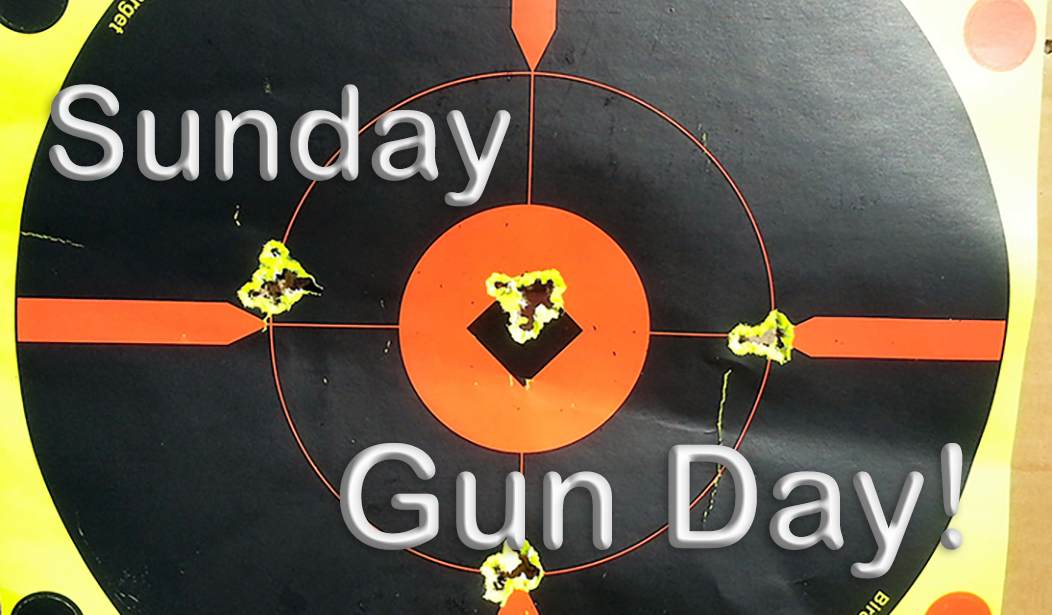Resolved: The Colt/Browning 1911 pistol is the standard by which all auto-loading pistols must be judged. Now that that’s established, I’ll proceed to tell you about this magnificent sidearm and how it came to be the gold standard of auto-loading handguns. I think you'll agree it's the greatest 20th-century martial sidearm.
John Browning
It should come as no surprise that the DaVinci of firearms was involved in the genesis of the 1911. Browning’s reputation as a gun designer was well established long before he started in on auto-loading pistols, having produced such outstanding pieces as the 1894 Winchester (a gold standard in its own right) and the first commercially successful, mass-produced pump shotgun, the 1897 Winchester.
He started in on auto-loading pistols with the tiny FN Browning M1900 in .32ACP, a pipsqueak of a little blow-back pistol. But in that same year, he also designed the short-recoil operated Colt Model 1900 in .38ACP, and it was that pistol that would become the grandfather of a great line of martial pistols.
The Precursors
After two years, the Colt 1900 and its .38ACP cartridge were modified and improved somewhat, splitting into three designs: The 1902 Sporting Model, the 1902 Military Model, and the 1903 Pocket Hammer Model. All three were chambered for the .38ACP, but in 1905, a final model in this line appeared, the Model 1905 with a 4 7/8” barrel chambered for a short, rimless .45 caliber cartridge that would become the immortal .45ACP.
In 1899, the U.S. War Department had been seeking an auto-loading pistol design to replace the anemic M1892 revolver and its .38 Colt cartridge. Tested were the Luger in 7.65mm, the C96 Mauser, the Mannlicher M1894, and the Colt M1900. This early Colt had some issues with trigger linkages that adversely affected reliability in the aptly named “torture tests” of the day, and so the War Department purchased 1,000 DWM Lugers as an experiment.
This experiment didn’t last. The U.S. Army, Navy, and Marine Corps had learned some important lessons in the Spanish-American War and the Philippine-American War that convinced the War Department to once more pursue a major-caliber auto-loader.
During that latter conflict, the troops facing stoned Moro warriors encased in rawhide armor found the .38 Colt revolvers lacked stopping power, but when the Army imported some M1873 Colt single-actions in the grand old .45 Colt, things changed; a tribesman with a couple of .45 Colt slugs in his chest generally lost all interest in matters martial then and there.
The War Department quickly sourced a stopgap, buying a lot of the big, rugged Colt New Service double-action revolvers in .45 Colt and deeming them the M1909 revolver; meanwhile, the testing of auto-loaders went on. By this time, the mind of Browning had fixed the shortcomings of the M1900 series pistols and had produced something vastly better.
The 1911
The first round of service testing reduced the field of alternatives to three: The Savage, the DWM Luger, and the new Browning/Colt M1911. In one of the final tests, both Colt and Savage pistols were fired six thousand times over the course of two days. When the guns grew too hot to hold, they were dunked in a bucket of water to cool them, and the firing went on.
The Savage had 37 malfunctions over the course of the test; the Colt had none. In short order, the War Department had adopted their first primary issue auto-loading handgun, the Colt M1911.
The original 1911 had some ergonomic flaws. The sights were somewhat rudimentary, at least by today’s standards (although better than the near-non-existent rear sight of the issue Luger.) The hammer spur was long and low enough that it frequently dug into the web of the firing hand, especially if the shooter (like me) had big hands. The thumb safety was small and easy to miss, and the trigger was too long for a shooter (unlike me) with short fingers.
After the new pistol received its baptism of fire in the Great War, Colt made some changes based on the experiences of service members who used the pistol in the field.
The 1911A1
In 1924, Colt engineers brought out a revision of the War Department’s .45. The 1911A1 had improved sights, a shorter trigger, and a lengthened grip safety spur to address that nasty hammer bite. The Great War had revealed that the 1911 tended to shoot low in rapid-fire instinctive shooting, so the 1911A1 had an arched mainspring housing to address this tendency by making the muzzle hold naturally a tad higher.
In this form, the 1911A1 served until 1984 as the primary service sidearm for all branches of the U.S. military, a 73-year run, unprecedented in U.S. military history. The Colt 1911 proved its mettle in battlefields all over the world. The old slab-sides wasn’t as pretty as a Luger or as finely fitted as the Sig P-210, but it had three great qualifications for a martial pistol: It was rugged, reliable, and tough. I’ve never handled or fired a Savage Model 1907, but I own a Luger, not a DWM as tested by the War Department, but rather a 1938 piece made at the Mauser-Werke in Oberndorf. The Luger is a beauty and one of the most naturally pointing pistols I’ve ever handled, but it’s fussy about dirt, finicky about ammo, and, with its original, serial-numbered magazine, jams at least once in every mag full of ammo. I love the Luger for its style, but I wouldn’t have wanted to be the German whose life depended on the damn thing; if keeping my hide unperforated was in question, I’d take a homely old 1911 over the Luger any day of the week.
I confess a nostalgic fondness for the M1911A1. When I was a young fellow just out of my initial entry training, I was assigned to an Infantry battalion as a Company Aidman; as part of my field gear, I was issued an old leather holster with “US” stamped on the flap and, to fill it, an M1911A1 pistol of a vintage that meant my father could very easily have carried the same sidearm in 1944-46 during his tenure in Uncle Sam’s colors. A year later, I was on the battalion bullseye pistol team when we won the Division pistol championship.
My old 1911A1 was somewhat the worse for wear, but man, did that thing shoot and shoot and shoot.
The Commercial Models
This is where the gold standard status of the 1911 design really shows.
Colt sold the 1911 as the Government Model, chambering it not only in the .45 ACP but also in the .38 Super and 9mm Parabellum. But after World War 2, the company began branching out.
In 1949, Colt brought out the Colt Commander, which may have been the first major-caliber dedicated CCW piece. The first Commander had an aluminum frame, a shorter slide, and a 4¼” barrel. In 1970, Colt added the “Combat Commander” with the same barrel/slide and a steel frame, at which time the original was renamed the “Lightweight Commander.”
In 1970, Colt introduced the Series 70 in all Government Model variations, with a collet barrel bushing and some other internal improvements; this is probably the best 1911 Colt ever made. Ten years later, the Series 80 was produced, which added an internal firing-pin safety – this on a gun that already had two mechanical safeties, three if you count the external hammer. Also added was a half-cock notch on the hammer. The Series 80 was somewhat underwhelming to hardcore shooters, as the added gunk on the lock work reduced the original design’s rugged simplicity.
Both versions were also available in the Gold Cup match pistol trim. If you want to do some serious bullseye shooting, you won’t find anything much better suited than a Series 70 Gold Cup.
Beginning in the late Seventies, Colt found they had some competition. Such upstarts as Springfield Armory, Federal Ordinance, and Detonics began making fine pistols on the 1911 pattern. In 1985, a company called Para-Ordnance introduced the first 1911 featuring a double-stack, 14-round magazine – and things just got more and more complicated after that.
In today’s market for auto-loading sidearms, the 1911 pattern, after a hundred and eight years, still dominates.
Today
At present, I own one 1911 myself, a simple mil-spec replica of the 1911A1 with Series 70 Colt lockwork, made by Armscor in the Philippines and imported by Rock Island Armory. This was admittedly a nostalgia purchase, as I also bought a replica US flap holster to carry it, but that affordable (about $400) 1911A1 copy is much like the original: rugged and powerful. I had a few feeding problems until I switched to Kimber magazines, and now it will feed empty cases and reliably shoots any ammo I care to feed it. Rock Island Armory imports fancier versions of the same gun, and I am told that they are solid and reliable in whatever livery you choose to try.
 It would be more difficult today to name the gun companies that don’t make a 1911. Smith & Wesson gave in to the inevitable some years ago and began building their own version of a 1911; ditto for Ruger. Remington began building 1911s some years back. My loyal sidekick Rat has one, a Remington 1911 R1 Carry, and it’s a fine shooter, although the trigger is a bit heavier than I’d prefer.
It would be more difficult today to name the gun companies that don’t make a 1911. Smith & Wesson gave in to the inevitable some years ago and began building their own version of a 1911; ditto for Ruger. Remington began building 1911s some years back. My loyal sidekick Rat has one, a Remington 1911 R1 Carry, and it’s a fine shooter, although the trigger is a bit heavier than I’d prefer.
My old buddy Dave has a Les Baer long slide, a 6” barreled, dedicated 1911 target gun; it’s so well made that you’d have to work at it to not shoot it well.
Kimber, Springfield Armory, Randall, Olympic Arms, Sig-Sauer, Taurus, Dan Wesson, High Standard, and many more – all have bowed to the demands of the market and began making 1911-pattern pistols. Forget about a gun designer wondering how his autoloader will measure up to the 1911; most of them now are just building 1911s and having done with it. You just can’t find a pistol with the history or the broad appeal of the 1911, no matter what you use it for.
The Colt/Browning 1911 is a rare kind of design from a rare kind of designer: simple, tough, solid. In its original form, it is as reliable as the morning sunrise; with its original .45ACP cartridge, it packs enough wallop to finish most tasks, be they sporting or defensive, with authority. The 1911 is as near an immortal pistol design as you’re likely to find and will probably last throughout this 21st century – making it, as resolved, the gold standard of auto-loading sidearms.














